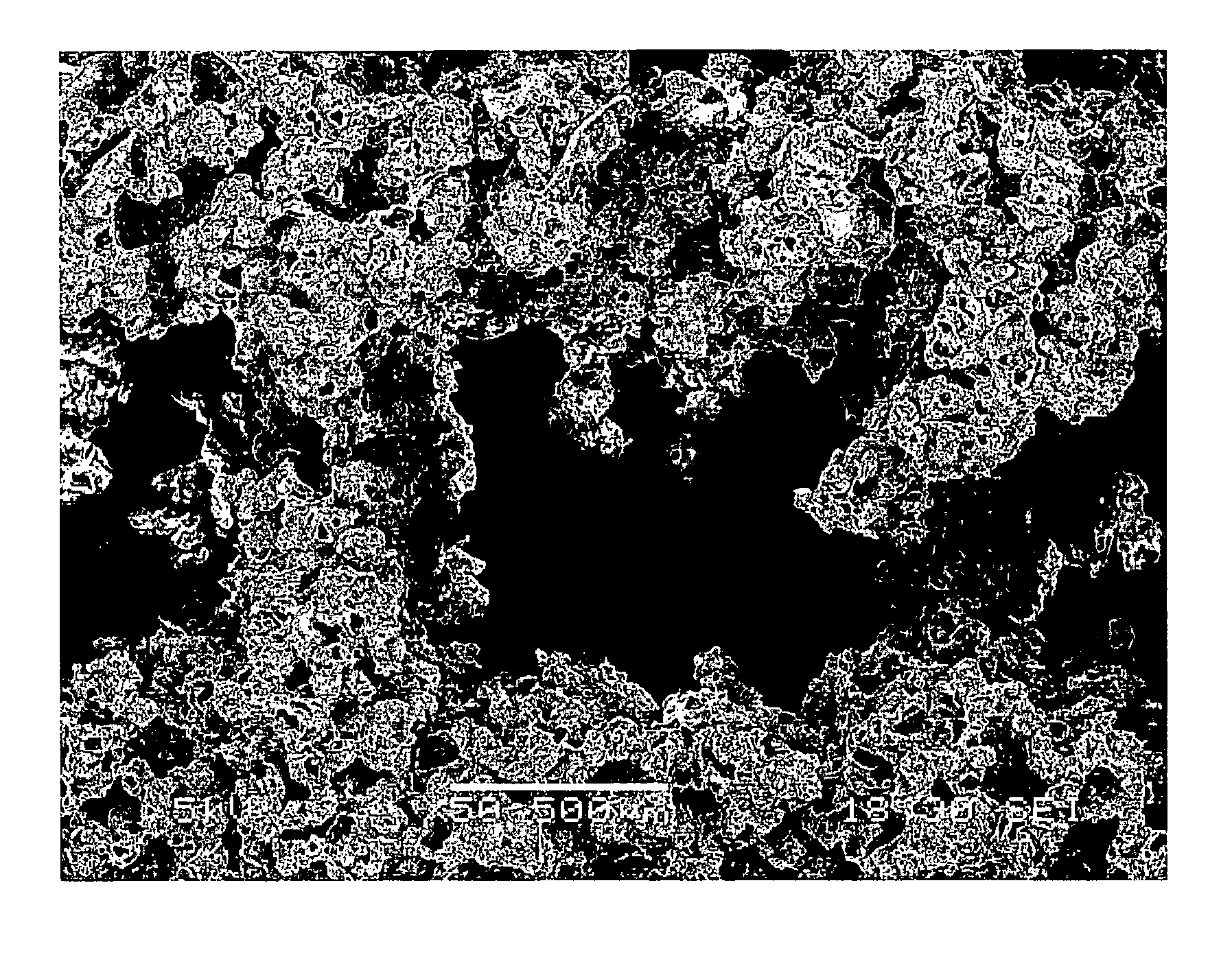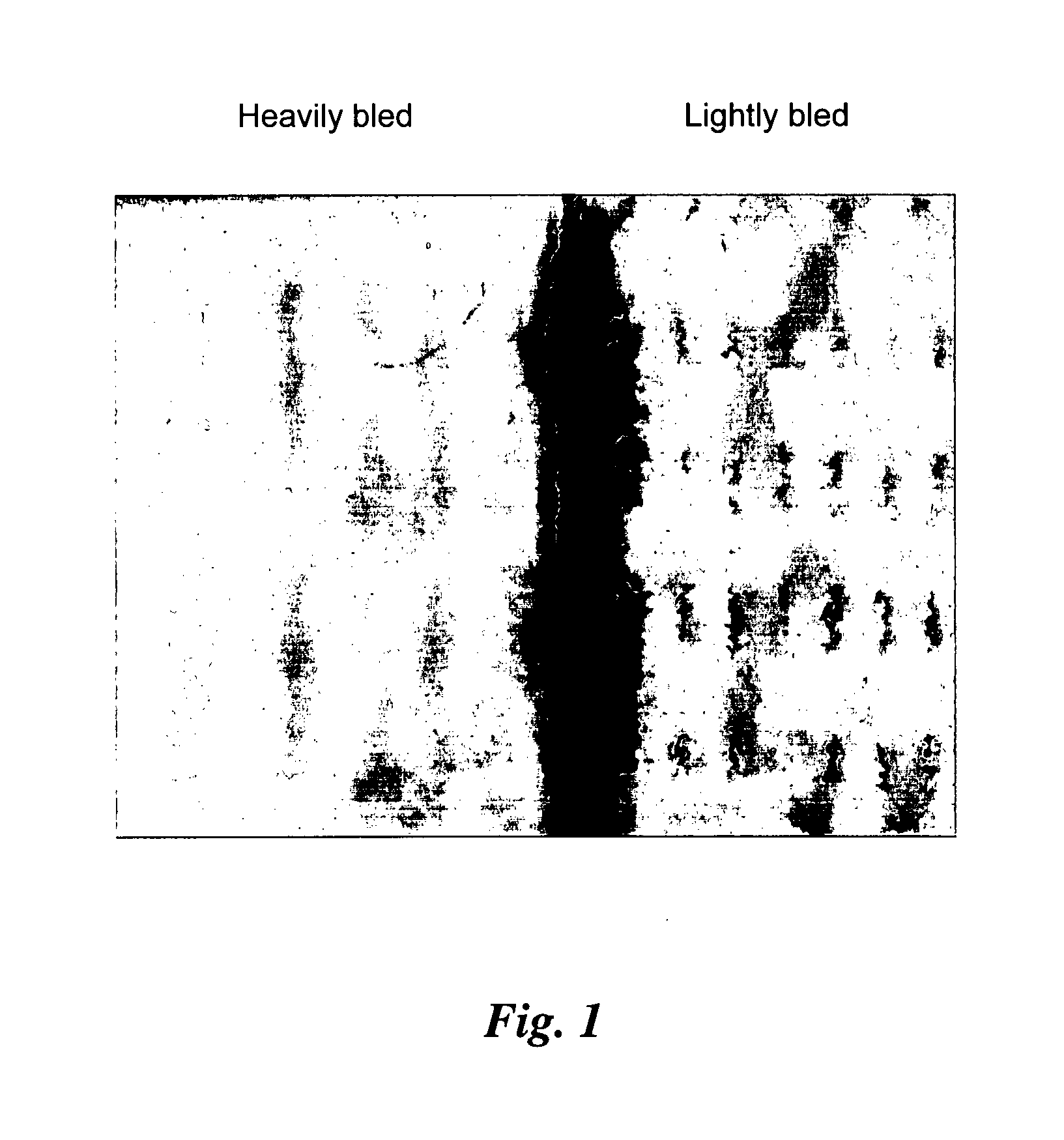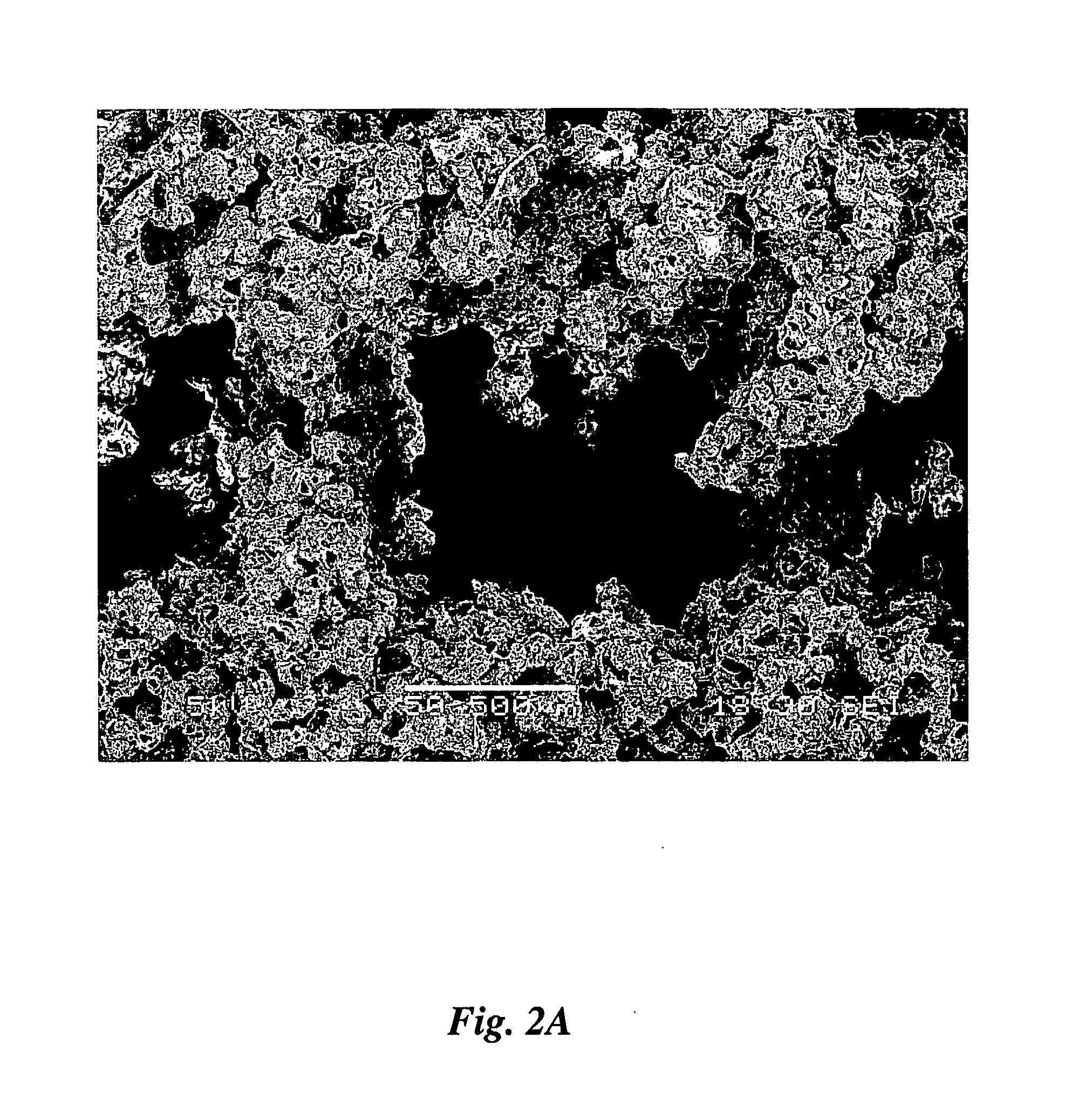Manufacturing Process, Such as Three-Dimensional Printing, Including Solvent Vapor Filming and the Like
a manufacturing process and three-dimensional printing technology, applied in the field of manufacturing process, can solve the problems of increased difficulty in dispense of organic solvents from printheads, increased difficulty in resolidification, so as to achieve more control over the porosity of the resolidified structure and small volume
- Summary
- Abstract
- Description
- Claims
- Application Information
AI Technical Summary
Benefits of technology
Problems solved by technology
Method used
Image
Examples
example 1
[0086] This Example compares the microstructure of polymer structures which were 3D-printed using the water printing solvent vapor fusing of the present invention against the microstructure of polymer structures which were 3D-printed using conventional dispensing of liquid chloroform onto a powder bed operating using the dissolution / resolidification mechanism. Both powderbeds contained a water-soluble porogen for later leaching out as an aid to creating porosity in the finished biostructure.
[0087]FIGS. 4A, 4B and 4C illustrate the microstructure of the structure made by conventional 3DP with dispensed liquid chloroform. The powder used in this case was 80:20 NaCl:PCL, magnifications are ×150, ×250 and ×650, respectively.
[0088] There is some basic polymeric structure, which has the form of a film 432 (FIG. 4B) which is somewhat randomly crinkled and perforated but is somewhat continuous. This basic polymeric structure is believed to come from polymer material which dissolved comple...
example 2
[0093] This example compares the macrostructure of polymer structures which were 3D-printed using the water printing solvent vapor fusing of the present invention against the macrostructure of polymer structures which were 3D-printed using conventional dispensing of liquid chloroform onto a powder bed operating using the dissolution / resolidification mechanism. Both powder beds contained a water-soluble porogen for later leaching out as an aid to creating porosity in the finished biostructure.
[0094]FIG. 10 shows a face or top view of a structure. Actually, the two images in that figure are of not exactly the same part of a complicated structure. The sample on the right, printed by a process of a present invention, illustrates a sort of a screen structure. The sample on the left, printed by conventional dispensing of liquid chloroform, illustrates a structure which is sort of a collection of posts. Nevertheless, the size scales are the same and so there is validity in comparing the f...
example 3
[0096] The next example, shown in FIG. 12, compares printing onto the same powder bed composition with a pure water binder liquid (right) and printing with a binder liquid that is a solution of sucrose in water (left). It is believed that the structure resulting from the sucrose solution printing is better held together, and the structure with pure water is more flaky. It is believed that the presence of the sucrose provides binding with less dependence on dissolution taking place during the 3DP process itself, and results in somewhat better filling of spaces between particles and attachment of particles to each other.
[0097] It is believed that the sucrose solution has different wetting characteristics from plain water. It is believed that the sucrose solution causes more powder rearrangement (powder particles pulling closer to each other during the time when they are wet), which means that the primitive features thus formed pull slightly away from the bulk powder, which results in...
PUM
| Property | Measurement | Unit |
|---|---|---|
| size | aaaaa | aaaaa |
| porosity | aaaaa | aaaaa |
| size | aaaaa | aaaaa |
Abstract
Description
Claims
Application Information
 Login to View More
Login to View More - R&D
- Intellectual Property
- Life Sciences
- Materials
- Tech Scout
- Unparalleled Data Quality
- Higher Quality Content
- 60% Fewer Hallucinations
Browse by: Latest US Patents, China's latest patents, Technical Efficacy Thesaurus, Application Domain, Technology Topic, Popular Technical Reports.
© 2025 PatSnap. All rights reserved.Legal|Privacy policy|Modern Slavery Act Transparency Statement|Sitemap|About US| Contact US: help@patsnap.com



